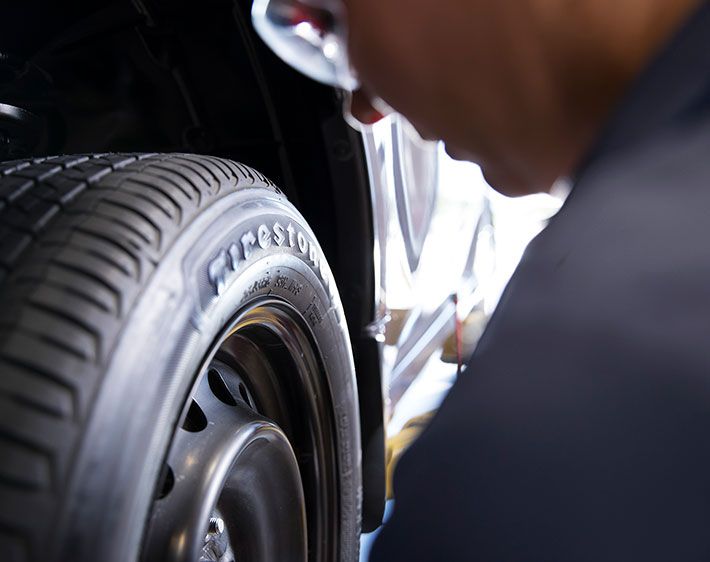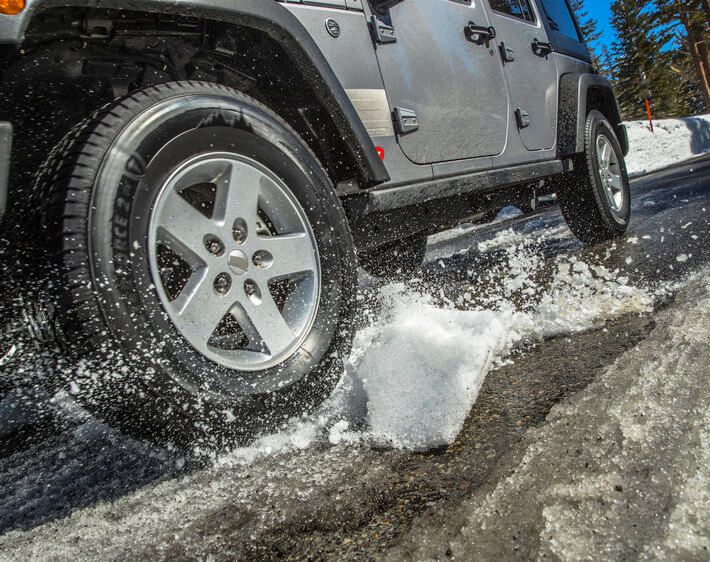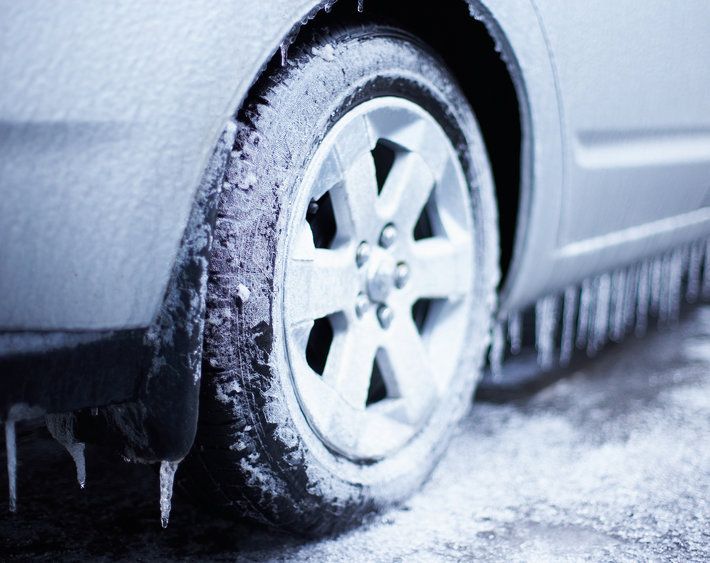Nine times out of ten, you can get an idea of how someone is doing by the expression on their face. Believe it or not, the same thing can be said for tires. Clues in tire wear patterns, like inner and outer wear, center wear, edge wear, cupping, and patchy wear, can help you understand the inner-workings of your vehicle—even if you aren’t a tire expert! Follow along as we teach you what to look for in your tire wear patterns, and then what you can do to help get them fixed. Let uneven tire wear run its course and you could be in for an unexpected tire failure when you least expect it.
Inner or Outer Shoulder Wear = Misalignment
If you examine your tire and discover that the inner or outer edge of the tire is wearing down faster than the rest of the tread, your vehicle’s wheel alignment is likely out of specification. This wear pattern indicates that your wheels are leaning too much to one side, which can typically be blamed on misalignment. Alignment problems can affect steering, suspension, and even your safety, so don’t waste time coming in for alignment services.
Center Wear = Over-Inflation
If your tires are wearing down rapidly in the center of the tread, you may be driving on tires that are consistently over-inflated. When your tires are filled over the recommended pressure, they’ll ride along the center of the tread—this makes the center of the tread wear down much faster than the rest of the tire. Review your owner’s manual for the vehicle's recommended tire pressure and check your tire pressure regularly!
Edge Shoulder Wear = Under-Inflation
In contrast to center wear, edge wear may occur when tires are under-inflated. If you’re driving on tires that are under-inflated, the edge of the tires will make the most contact with the road, causing the edges to wear down more quickly. Again, it’s important to check your owner’s manual to get the recommended tire pressure for your vehicle, then get in the habit of checking your tire pressure regularly! Wear on two shoulders can also indicate hard cornering or improper rotation.
Cupping = Suspension Troubles
If you notice that there are random smooth spots on your tire or little dips in the tread wear, the culprit could be your vehicle’s suspension system. More specifically, suspension parts are probably worn out or even bent out of shape. Could you have recently hit a curb or pothole? If you notice a cupping pattern or feel a slight rumbling sound when you drive, it’s important to get your suspension checked and replace any old or misshapen parts.
Diagonal, Patchy Wear = Time for Tire Rotation
Patchy tire wear suggests your tires are out of balance. If you examine your tires and notice that the wear is uneven, it’s time to have your tires rotated and probably aligned! By regularly rotating your tires, you help prevent this uneven wear from worsening over time and you’ll extend the lifespan of your tires.
If you notice unusual wear patterns on your tires, the best thing to start with is an alignment check at your local Firestone Complete Auto Care. Compromised tires may cause car accidents—don’t put yourself or others at risk. Whether you need a quick tire pressure adjustment or a wheel alignment, you can be sure our technicians will take care of your tires.



